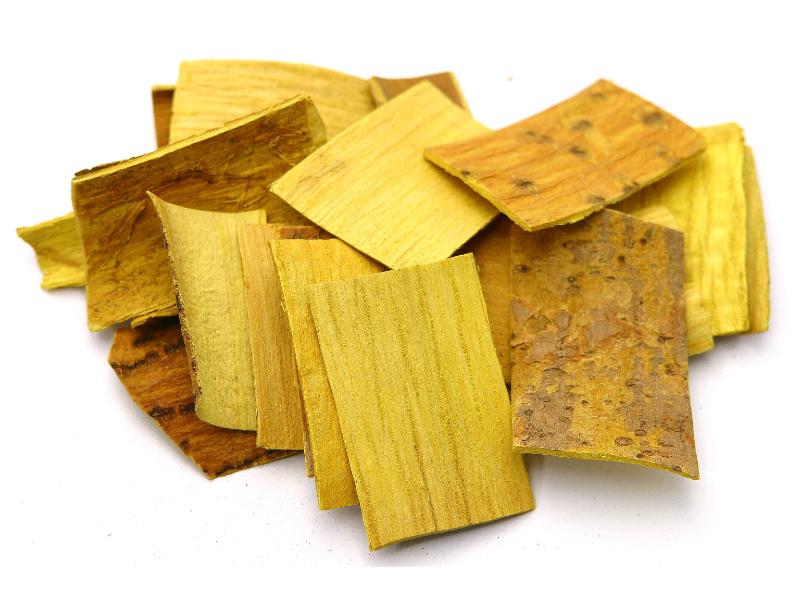Search in medicinals
Phellodendri Cortex
Phellodendron [bark]
黄柏 〔黃柏〕 huáng bǎi

Alternate English names: arborvitae [bark]
Alternate Chinese names: 檗木 bò mù; 檗皮 bò pí; 川柏 chuān bǎi; 黄柏 huáng bó; 黄檗 huáng bò; 蘗木 bò mù
Kingdom: Plant
Origin in PRC Pharmacopoeia: Phellodendron amurense Rupr.; Phellodendron chinense Schneid. (PRC Pharmacopoeia)
Origin in unofficial sources: Phellodendron amurense Rupr.*; Phellodendron chinense Schneid.*; Phellodendron chinense Schneid. var. glabriusculum Schneid.; Phellodendron chinense Schneid. var. omeiense Huang; Phellodendron chinense Schneid. var. yunnanense Huang; Phellodendron chinense Schneid. var. falcatum Huang
Use: Medicinal
Category: Heat-clearing agents / Heat-clearing dampness-drying agents
Properties: Bitter; cold.
Channel entry: Kidney, large intestine, and bladder channels.
Actions and indications:
- Clears heat and dries dampness: Damp-heat vaginal discharge, heat strangury (rè lìn), leg qì (jiǎo qì) (beriberi), dysentery, and jaundice.
- Drains fire and resolves toxin: Heat toxin patterns of
sore s, welling-abscesses, and clove sores; eczema anddamp sores . - Abates vacuity heat:
Yīn vacuity with heat , night sweating, or seminal emission.
Dosage and method: Oral: 5–10g; used in decoctions, powders, or pills. The raw form is preferred for clearing heat, drying dampness, and resolving toxin. Mix-fried with brin, it abates vacuity heat. Stir-frying reduces the cold nature and is used for patients with spleen-stomach vacuity and for those with vacuity fire from insufficiency of kidney-water. Stir-frying with wine takes advantage of the upbearing action of wine to conduct the effect of huáng bǎi upward in the treatment of vacuity fire flaming upward with oral putrescence. Stir-frying also makes the agent able to quicken the blood and disperse stasis. Charring enables huáng bǎi to stanch bleeding while clearing damp-heat, making it suitable for the treatment of bloody stool and flooding and spotting.
Warnings: Contraindicated in spleen-stomach vacuity cold because its bitter cold nature easily damages stomach qì.
Product description: This product comes in flat pieces 1.5–4 mm thick, with the cork layer already removed. It is yellow with a green or brown tint. The outer surface is smooth and conspicuously fibrous; the inner surface is a dirty or grayish brown yellow, reflected in the literal meaning of the yellow arborvitae.
It is light in weigh and is easily broken, leaving a fibrous fracture. The decocting pieces are thin strips or squares that are yellow if crude and darker if stir-fried or charred.
Quality: Superior barks are dry, thick, solid, and finely grained, with the rough outer layer removed.
Production area: Phellodendron amurense: Jílín, Liáoníng, and Héběi. Phellodendron chinense: Sìchuān, Guìzhōu, and Húběi.
Etymology: The name huáng bǎi 黄柏, literally yellow cypress,
reflects the color of this bark. Bǎi 柏 refers loosely to any trees of the cypress family (Cupressaceae).